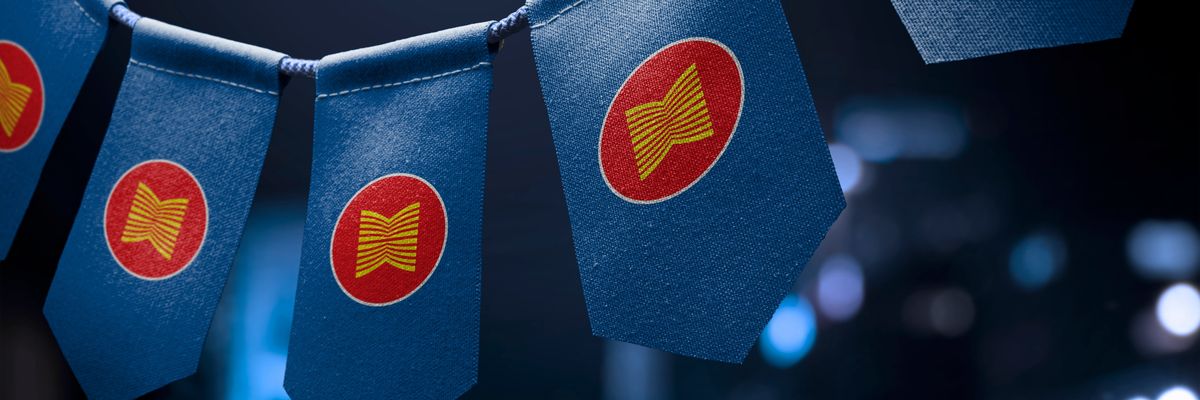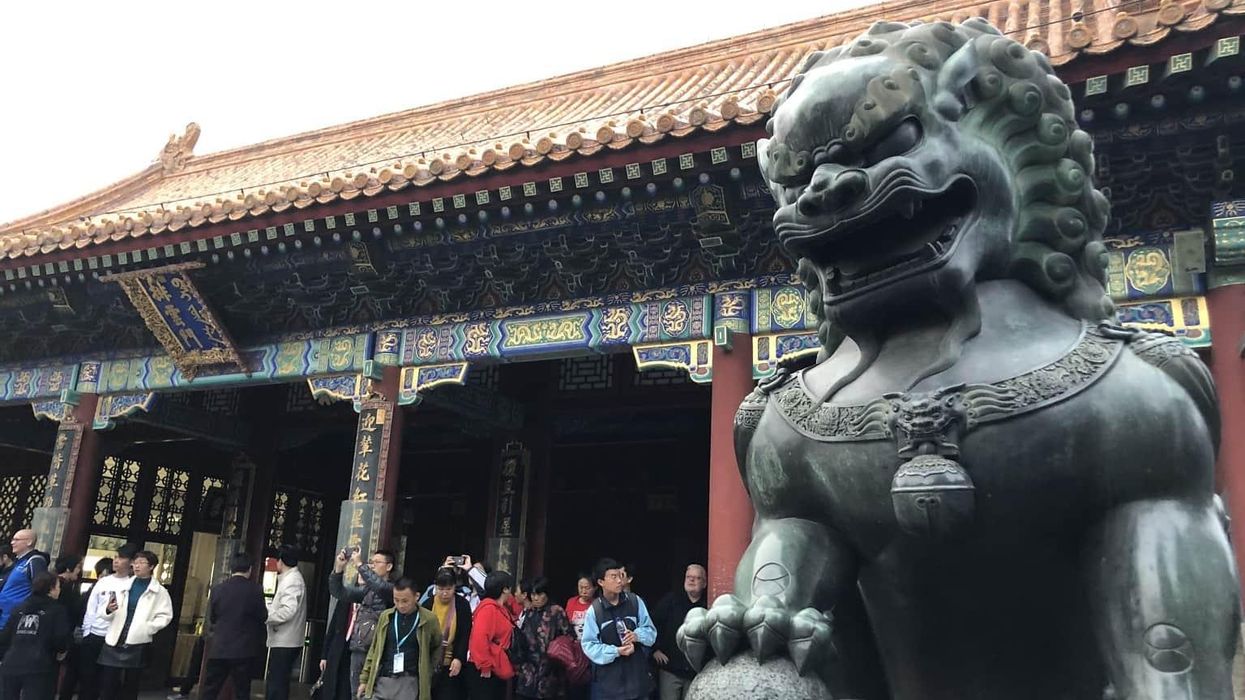China and the United States, like sports captains picking sides, have been engaged in a considered effort to enlist partners.
In the recruitment rush, the Biden administration has given short shrift to the Association of Southeast Asian Nations (ASEAN) and its much vaunted balancing, or “centrality” in the Asia Pacific. Washington, like Beijing, has favored certain ASEAN members over others, frustrated no doubt by the group’s lack of cohesion and effectiveness.
But in the new multipolar world, these hinge countries and their groupings can be as important as power poles.
There has been a lot of coalition building lately. In August, the BRICS bloc — Brazil, Russia, India, China and South Africa — invited six new members to join at the start of 2024. In March, Iran and Saudi Arabia reestablished ties after years of antagonism in a deal brokered by Beijing. In July, China signed an accord on law enforcement and security with the Solomon Islands and announced a strategic partnership with Georgia. This month, China upgraded its relationship with American bugaboo Venezuela to an “all-weather” partnership.
The U.S. has been similarly busy — perhaps more so to make up for Beijing’s Belt and Road Initiative (BRI) bridge-building over the past decade.
In August, President Joe Biden and his Japanese and South Korean counterparts launched a trilateral grouping at Camp David. The U.S. and the Philippines in February revived an agreement giving increased American access to Filipino military facilities. In May, the U.S. and Papua New Guinea concluded a defense pact. At the G20 summit in New Delhi this month, the leaders of the U.S., the European Union, India, Saudi Arabia and other countries committed to developing an India-Middle East-Europe Economic Corridor for cooperation on clean energy, power grids and telecommunications.
After the G20, Biden traveled to Hanoi where the U.S. and Vietnam announced that they were elevating relations to a “comprehensive strategic partnership,” deepening cooperation in cloud computing, semiconductors and artificial intelligence — all areas of contention between Washington and Beijing.
In a 2021 lecture, Biden’s national security adviser Jake Sullivan described how the administration was assembling a “latticework of alliances and partnerships globally.” This was “not just about refurbishing the old bilateral alliances,” he explained, “but modernizing those elements of the latticework and adding new components.” Sullivan cited as examples the upgrading of the Quadrilateral Security Dialogue, known as the Quad (Australia, India, Japan, and the U.S.), to leader level and the creation of AUKUS, the partnership among Australia, the United Kingdom and the U.S. to provide nuclear-powered submarines to Canberra and collaborate on advanced technologies.
Both Washington and Beijing say they are not forcing countries to pick sides, though the impression that they do just that is unavoidable. Beijing has applied economic pressure on states for actions that it perceives to hew too closely to American positions — Canada, Australia, South Korea and Japan have had to deal with such coercion.
In network building, the U.S. has offered more carrots than sticks, particularly when it comes to courting pivotal states that Washington deems to have distinct geostrategic importance and — more to the point — the capacity to contribute to countering or containing China. In the Indo-Pacific, India, the Philippines and Vietnam have been the chief recipients of American courtship.
But what about ASEAN? Washington insists that it values ASEAN centrality, but the proof of its perspective is in its actions. Biden skipped ASEAN’s annual leaders’ jamboree with dialogue partners, leaving it to his vice president to go to Jakarta, but squeezed in a visit to Hanoi just days later.
The president’s participation in the G20 was a not-to-be-missed opportunity to butter up Indian Prime Minister Narendra Modi, who only in June had been feted at the White House. India is the most-prized pivot country in the Indo-Pacific (that status so obvious in the term). Under Modi, it sees itself as a power pole in its own right. New Delhi has proven its multi-alignment credentials, with its participation in the Quad, the BRICS and the China/Russia-conceived Shanghai Cooperation Organization (SCO), and its refusal to turn against traditional ally Moscow since the Ukraine war broke out. Biden is oiling the Indian hinge so it swings more Washington’s way — and may be succeeding, given India’s border clashes with China and its participation in joint military activities in the Pacific, Quad initiatives and Biden’s Indo-Pacific Economic Framework for Prosperity (IPEF).
ASEAN should be as critical a hinge player if not to win over, at least to keep “central” as the region’s balancer — a crucial section of the lattice that would act as a security blanket for peace and stability. Some member states, worried that the China-U.S. rivalry undermines their agency, have warned the two great powers against forcing them to choose sides. ASEAN has not bought into the American Indo-Pacific construct, merely articulating an “outlook” on the concept. Southeast Asian nations will profit more not by putting on any one team’s jersey, but instead playing the field as something of a referee or honest broker in good stead with both sides, however heated the competition.
U.S. administrations have never taken the centrality of ASEAN seriously, largely because member states themselves have failed to show what it means to be the region’s ballast. It is a systemic problem — ASEAN is no EU in either form or practice. Even though it has launched an “economic community” and has sought to address thorny problems, such as Myanmar and the South China Sea, as a group, it remains a politically divided, economically diverse collection of states, with a reputation for glacial progress and ineffectiveness. It was born this way, though it was successful in its founding mission to be a bulwark against communism’s spread.
But ASEAN has strengths beyond being the world’s fifth largest economy. Its convening power is unmatched, reaching across economic and strategic spheres. Its ASEAN Regional Forum and ASEAN Defense Ministers Meeting-Plus are as evolved and inclusive a strategic framework for the region as is possible. ASEAN-led platforms offer a neutral space for the great powers to interact on a wide range of issues.
By lavishing attention on certain ASEAN members — the Philippines, Vietnam and Singapore (host of a U.S. military facility) — Washington is mimicking the Chinese divide-and-conquer approach (Cambodia, Laos and Myanmar are reckoned to be on Team Beijing). But even small gaps weaken a lattice. The ASEAN way may be slow and plodding — negotiations with Beijing on a code of conduct in the South China Sea have dragged on for years — but this tortoise cannot be written off.
In a speech on September 13 outlining “the power and purpose of American diplomacy,” U.S. Secretary of State Antony Blinken tellingly never mentioned ASEAN. Yet, the Biden administration may be smartening up. Seven of the ASEAN 10 are part of the IPEF, the American answer to the Comprehensive and Progressive Agreement for Trans-Pacific Partnership (CPTPP), from which the U.S. withdrew, and the ASEAN-China concocted Regional Comprehensive Economic Partnership (RCEP) trade accord.
And guess who's coming to the White House for a bilateral with Biden in November? Indonesian President Joko Widodo, the very leader whom Biden “snubbed” in favor of one night in Vietnam.
With its sizable population, strategic geographical position, participation in China’s BRI, a maritime dispute of its own with Beijing, a growing strategic relationship with Washington, and a critical presidential election next year, Indonesia is the key hinge power in Southeast Asia. Like India, it has proven its agency and pragmatism, particularly in vital areas such as data security standards and infrastructure development. Giving Jakarta more attention would bolster ASEAN’s position in the American Indo-Pacific latticework, especially with Laos, a country that tilts towards Beijing and is taking over from Indonesia as ASEAN chair next year.
- How ASEAN countries can nurture productive US-China relations ›
- ASEAN’s new math: Washington should think addition, not subtraction ›
- Biden's vaunted Indo-Pacific 'allies & partners' have their own ideas | Responsible Statecraft ›
- How China is 'eating our lunch' with soft power | Responsible Statecraft ›
- ‘America First’ meets ‘ASEAN Way’ in Kuala Lumpur | Responsible Statecraft ›
















